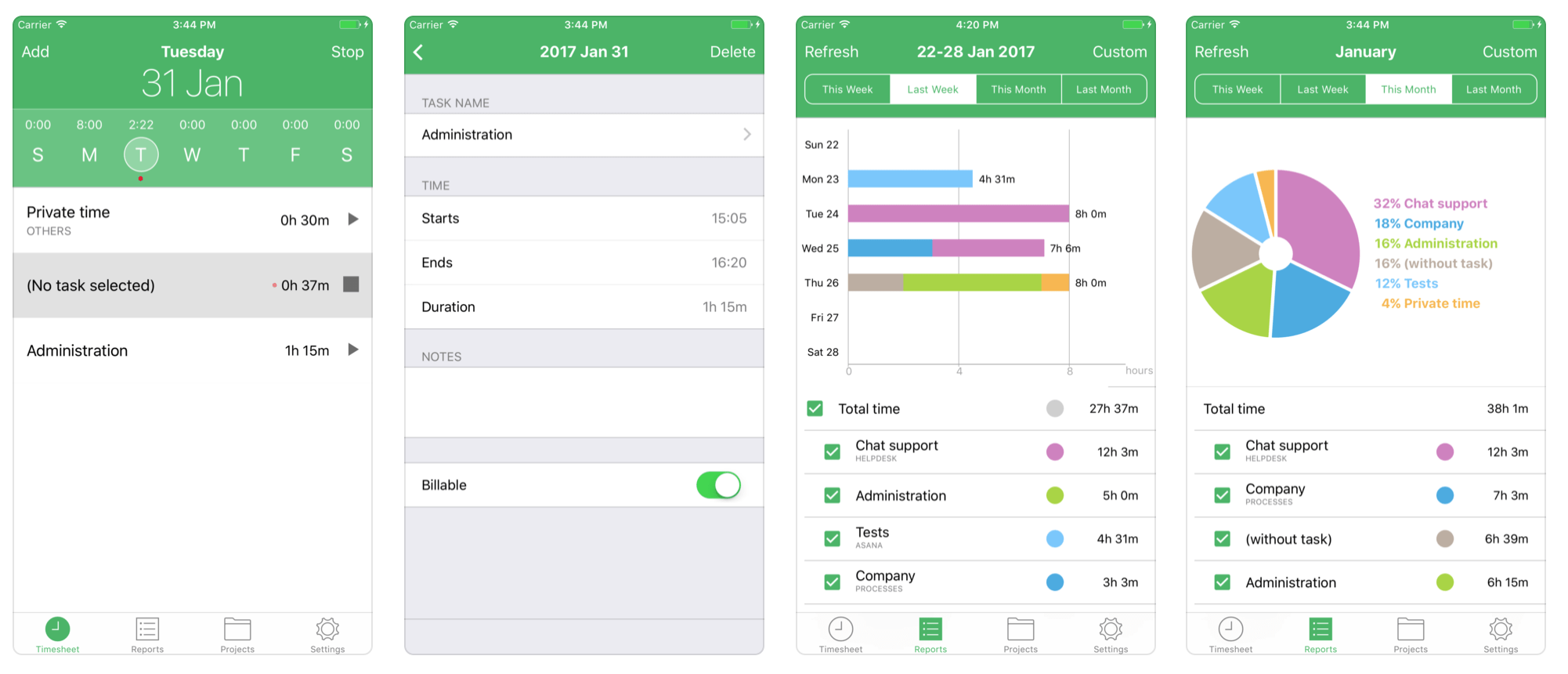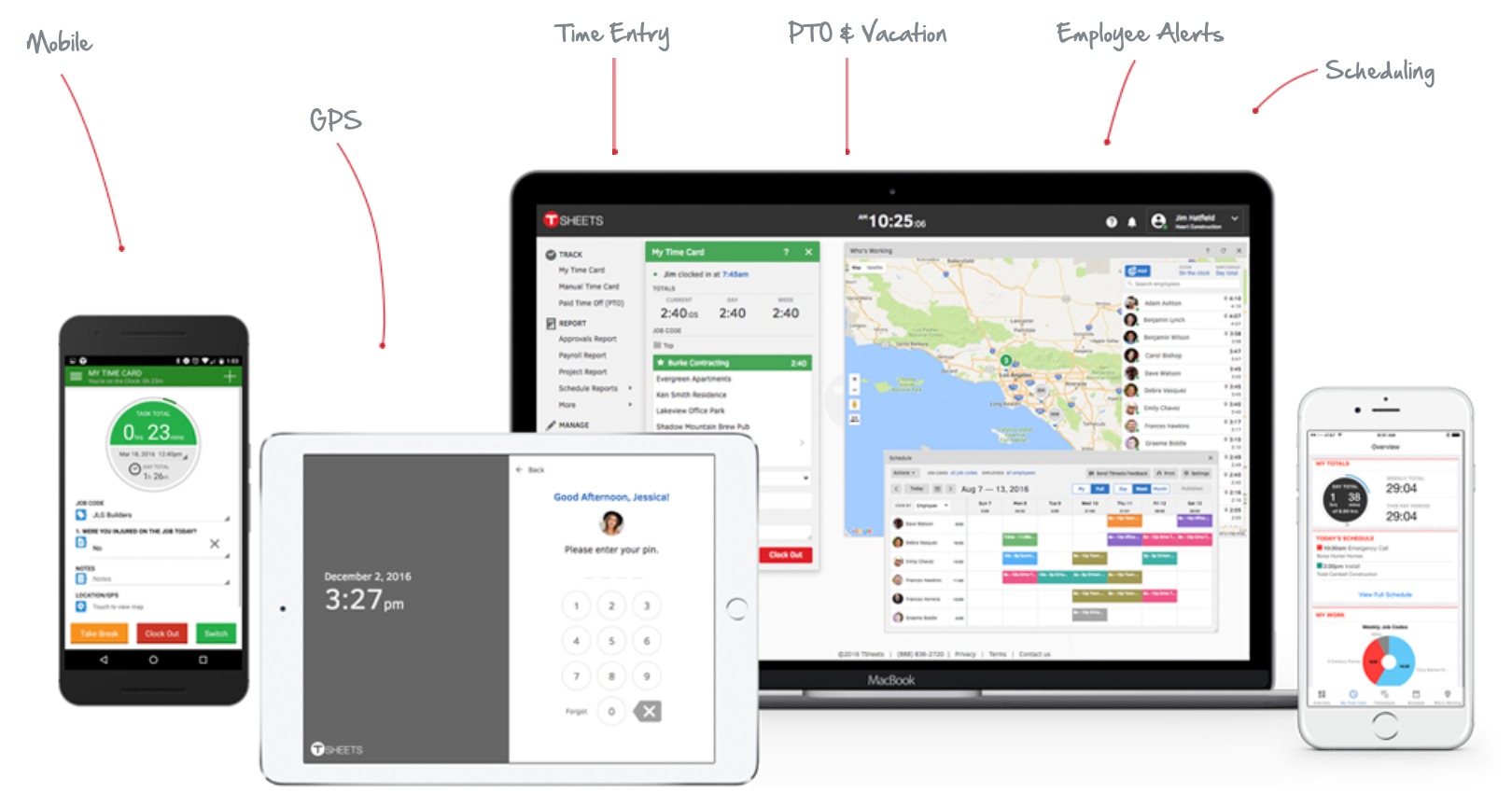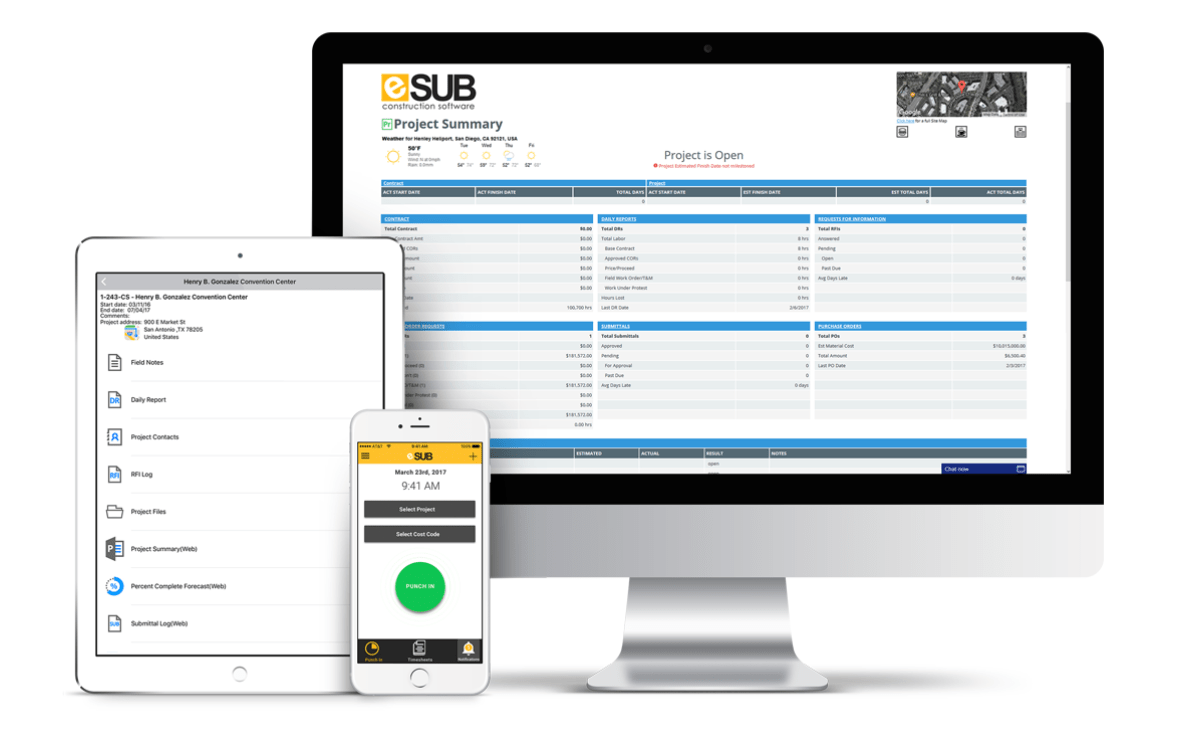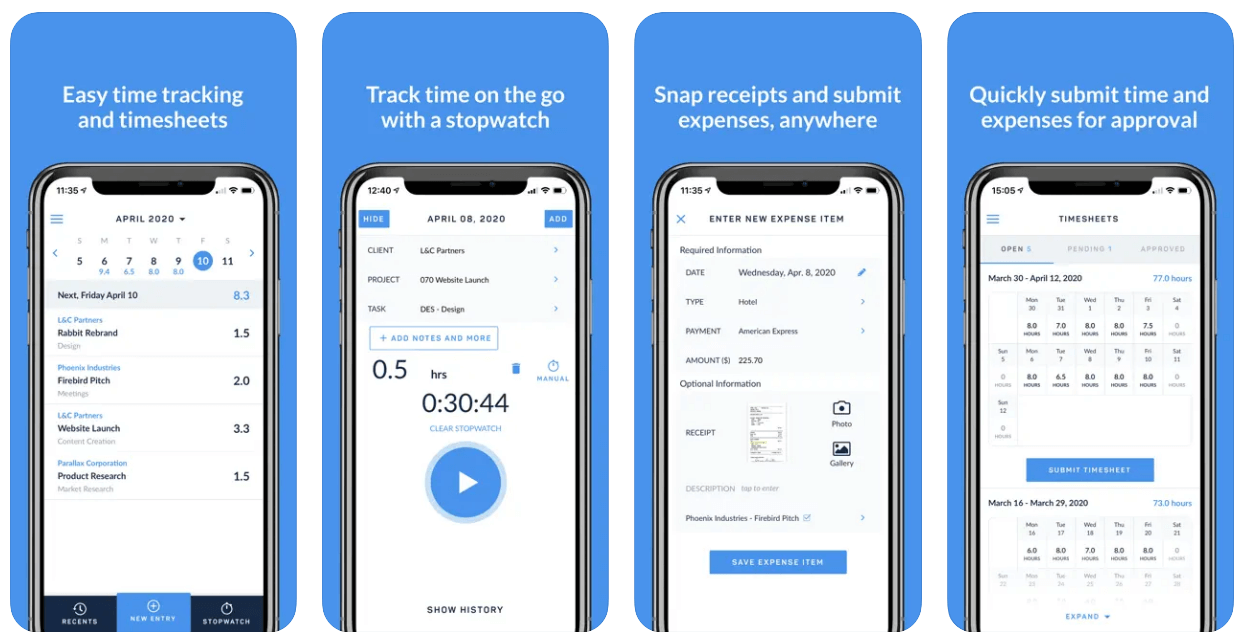Table of Contents
The Basic Info of Time and Materials Contracts
Because of the nature of the case, the matter of contract payment terms requires some delicacy and critical thinking. Every party is trying to bargain for the most beneficial conditions to cover associated risks and bring significant revenues. At first sight, the time and material contract seems to be more advantageous to contractors as they level the chance of exceeding time estimations or overspending on materials. They also cover contractors’ overhead and profits. However, it would be a mistake to think you’ll have to pay only for the time spent by contractors’ employees and the materials they’ve used; you will pay for the fully or partially accomplished work. On the other side, T&M agreements provide greater transparency to the customer by giving him an opportunity to verify and confirm the detailed project invoices, providing he is qualified enough to do that. Taking a few minutes for a thorough meditation might reveal both positive and negative sides of such a collaboration.
Understanding the possible pitfalls and strong points comes from clear insight on contract terms and conditions. Usually, the following items comprise the contract’s body:
Labor rate fixes the cost of each kind of labor-related service including managerial and administrative work. When setting rates, contractors should consider the actual performance value of every employee involved in contract execution and fixed costs. This includes additional fees covering legal expenses (insurance, taxes) and all kinds of employee benefits.
Material markup implies the customer gets retail pricing for the materials, varying from 15% up to 35% beyond the wholesale price.
Not-to-exceed point establishes the top amount the customer is willing to pay for the services. By including this precondition, the customer is protected from overcharges caused by increased project time or unexpected material appreciation. This item ensures the efficiency of the contractor as they won’t get any financial gain from delaying the project.
Maximum labor hours sometimes complement the not-to-exceed point by specifying the maximum amount of hours that can be billed to the customer. By adding both clauses, the customer leaves the contractor no space for term maneuvering.
The Comprehensive Review of T&M contracts vs Fixed Price contracts: Pros and Cons
Drawing on the listed conditions, we can assume the possible cons of the time and material cooperation model. The probable risks for the contractor include:
- Profit ceiling settled within a contract may decrease the financial gain of the contractor in case a customer includes a not-to-exceed contract point and negotiates the discounted markup on materials or lower hourly rates.
- Disregarded market value on materials may bring significant losses in expected revenues to the contractor. It happens when the parties agree upon reduced rates on materials based on their internal cost allocation policy and do not consider market swings.
- Reduced billing hours influence the coverage of fixed costs which should also be reduced to the same extent the billing hours were. Otherwise, the contractor must prescribe separate amounts in the contract.
- Large projects often entail additional funding, and the contractors might be ‘trapped’ within a contract while the customer is looking for the needed funds. This is one of the risks that is hard to anticipate.
- Disputes caused by the customer’s lack of expertise within a project’s field might result in difficulties confirming invoices.
- The fixed profits nature of the time and material contract might discourage some ambitious contractors who would rather pursue projects with obvious growth potential.
- Constantly changing project requirements, although accepted as granted within T&M model of cooperation, add technical difficulties, causing frustration and wasted effort.
At the same time, owners are subjected to the following challenges:
- The initiation of a project without mutually agreed upon technical specifications and estimates put customers at risk of drastic cost increases. Relying upon contractors’ experience and trustworthiness might result in conflicting views on the major milestones of a project. From a financial perspective, the unexpected extension of the project’s scope can lead to a lack of funds and, therefore, delays.
- For the above-given reason, business owners have to stay involved in the project’s progress to avoid undesired project deviations.
- Customers’ technical rawness makes them liable for the contractor’s competence with practically no way of proving their point or grounding their doubts.
- The clients bear all financial risks regarding the poor quality of work or unreliable contractors boosting working hours or hourly rates. The only preventive measure for such a scenario is thorough background checks and verification of previous references.
Looking on the bright side, T&M cooperation creates a practical vantage for improved project quality. Preparing wisely will benefit both companies. Among the numerous pros of T&M contracts, we should highlight the following strengths:
- The end product will probably beat the one created under fixed-price contracts in quality and functionality. (That’s especially true for software development ventures where systems’ usability and multifunctionality play a crucial part.) This is partly because contract terms allow for greater flexibility to the contractor, making the final product highly adaptable to constantly changing technical requirements or business conditions without wasting time for renegotiation of contract terms.
- The final product is likely to be more profitable to the owner. Without the substantial project scope, the customer is responsible for functionality reconsideration as often as his business objectives demand it. By continually analyzing market trends and conditions, he can decide what features would result in higher ROI and what course of development is better to pursue. It’s often the case that a project is begun with certain business requirements and ends with entirely different goals. Time and material collaboration make a perfect choice for such projects.
- The time-effectiveness of a given model is achieved in two ways: by saving time for the preliminary itemized specifications and through the effortless adaptation of new technical or business requirements.
- Some software houses send an invoice email to clients with an ‘uncertainty’ fee enclosed within the final price (the fee covering the unexpected additional expenses). However, the essence of T&M contracts excludes any uncertainty as the payment is predetermined by fixed hourly rates and the agreed cost of involved materials. With carefully established rates, the owner will pay for the completed work alone, and the contractor will be able to collect the expected profit without further adieu.
- T&M agreements lower the risks of violating contract terms in case of early contract termination as you’re not committed to the business cooperation until the end of the project or contract.
- Such contracts involve a higher level of transparency assured by implementing time and material tracking solutions. In fact, the customers are free to decide how involved they wish to be. Working with a new contractor, they could establish 24/7 control over the project’s progress. Once it’s done, every party can rest assured its obligations will be properly fulfilled.
T&M contacts work best for projects with no specific requirements when customers have merely a business idea and major metrics they wish to gain. It also suits long-term ventures that can be divided into smaller functional units determining further development of a project. Apart from making products from scratch, T&M contracts can be comfortably used for post-development support as there are always things to do with no need to assign a dedicated team. An excellent example of T&M implementation is joint teams, which consist of employees from different contractors or outsourcers being allocated to the same project, creating an interdependency and positively influencing the outcome.
Smart Time and Materials Contract Negotiation Tips
At this point, it should be clear that the success of T&M cooperation heavily depends on the negotiation skills of the parties. Thoughtful contract discussions might balance the scales and create a productive and efficient environment of cooperation.
Companies should pay particular attention to the following aspects of collaboration to avoid overspending or delays throughout the project’s lifecycle:
- Make sure the contractor’s rates are clearly defined in a contract body and secured with a separate clause fixing these rates for the duration of a contract.
- Before signing the created invoices, check the distribution of the budget with a contractor’s team. If the most substantial portion of work falls on senior (the most qualified) employees, your budget is likely to be overspent in the end. In this case, you should ask the contractor to revise the staff allocation within the project.
- If the price of materials specified by a contractor seems too exaggerated, you should consider the purchase of materials on your own. In this case, you will not overpay for the operational costs of the contractor and will get the materials at the fair market rate. Moreover, if your project is big enough, you can get the wholesale price, considerably saving your funds.
- Keep active communication with a dedicated project manager and set up weekly burn reports to be continuously updated on the project’s progress and the budget’s remaining balance.
- Building on current progress and state of your project’s budget, you can exploit Change Orders to document necessary adjustments to your project’s timeline or the number of team members involved. Do not underestimate the importance of compliance with legal practices protecting your interests as a service recipient.
Contractors, despite fewer risks associated with the T&M collaboration, should try to promote their best interests and stand their ground. They’d better watch out for the following scenarios:
| Key Point | Description |
| Role Understanding | Clients may overreach by deciding roles and number of people, neglecting project management. Achieving results relies on utilizing your team’s full potential. |
| Initial Doubts | Assign an experienced project manager to involve the client and explain technical aspects if there are some. |
| Contract Terms | Some clients might confuse “time & material” and “fixed price” contracts. Clarify differences between the contracts to align expectations. |
| Client Communication | Insist on a dedicated contact for decision-making and problem-solving. |
| Change Requests | Clients might not understand the impact of frequent change requests. Ensure client awareness of potential budget increases or deadline shifts. |
Hopefully, these bullet-points have proved the point of T&M contracts not only being safe, if prepared carefully, but also beating fixed-price contracts when it comes to the product’s quality and performance flexibility. Of course, you can still have reasonable doubts but make sure they’re born from justified arguments, not from superstitious myths from word-of-mouth.
True or False things said about T&M contract deals
For the sake of justice, though, let’s review some of the popular myths of T&M contract traps and try to dispel them.
Contractors intentionally delay projects to gain more profits.
This myth is certainly based on a true story. Indeed, there was a once contractor who tried to exploit the implied flexibility of a contract to earn extra credit. But what about the conclusion of this story? The most probable end looks like this: the contractor was eventually kicked out of the business due to his bad reputation because such contractors never last. The active communication channels within every industry and the extensive growth of social networks warn any indiscreet vendors to think twice before cheating a client.
There is no way to keep T&M projects within limited time and budget frames.
If the budget and time are, in fact, limited, there is only a question of precise and structured workflow planning, to meet the desired threshold. It is important to understand that both sides of the cooperation are interested in mutual benefit. Companies are pleased to cooperate with contractors to achieve the lowest possible budget with the highest product quality. Meanwhile, contractors hope to prolong cooperation with a client and get new projects or to be recommended to the clients’ partners. If both sides are happy, there is a way to go forward together.
The inability to predict the final cost of a product prevents the customer from the successful business management of a project.
The T&M model is usually implemented for products with no exact scope of work. Since there is no detailed roadmap for all expected deliverables, there is no way of predicting the final price at the beginning of the venture. When it comes to back-end development, this model is ideal for crafting a novel, unique product that has no precedent, as it can serve as a blueprint for developing similar products under fixed-price contracts.
All arising changes to the project’s scope should be immediately reflected in the contract’s value.
The constant revisions of the contract’s terms and value would negatively affect technological progress and cause unnecessary delays and unpleasant discussions between company and contractor. The flexibility of T&M agreements represents one of its core edges in comparison to fixed price cooperation, and by neglecting this ‘feature’ you’ll cause distractions and drop overall performance efficiency.
The only thing to discuss is how to make sure the chosen team is fully engaged with a project and scrupulously fulfills their undertakings. This is where the modern time and material tracking software comes to the forefront. By implementing an effective technological solution, you’ll significantly simplify the management of your project and prevent any risks of cheating on either side. The market is flooded with various time and material tracking solutions, so you will have an option or two fitting all your demands.
While selecting a tool, consider the following characteristics:
- Is it a desktop or mobile solution?
- What analytical capacities does it have?
- How easily it can be integrated into your existing operating system?
- How user-friendly and intuitive is it?
- How many of your requirements does it meet?
- What are its technical limitations?
- Are there any loopholes within its technical base?
- How cost-effective is it?
The list continues, depending on the business objectives you set into the system.
To give you something more to chew on, here is a list of the most popular T&M tracking apps:
TimeCamp
Time tracker with computer activities and productivity monitoring, attendance tracking, integrations, and more.

TSheets
Mobile Timesheet Tracker – track time from any location, using any device, in real time.

eSub
Construction project management software for subcontractors.

Harvest
Web-based time tracking and invoicing application.

Freshbooks
Accounting software makes running the small business easy, fast, and secure.

TimeDoctor
Time tracking and productivity monitoring software for remote teams.

Teamwork
Teamwork offers a suite of online productivity software that guarantees to maximize team performance.

ClickTime
Time and expense tracking tool that helps businesses become more productive.

Accelo
The operations automation system for the service business.

To conclude, every existing cooperation model has its strengths and its weaknesses. You need to accept and tolerate that. Nevertheless, finding your perfect fit is possible if you give the right answers to these questions: do you have the comprehensive product specification and an exact understanding of what product features you need? How limited are you in terms of financing and timeframes? And finally, how flexible are you?
If you are honest with yourself, you already know what model fits you best.
And if you need to hire software developers, Time&Materials contract or not, let us know.







